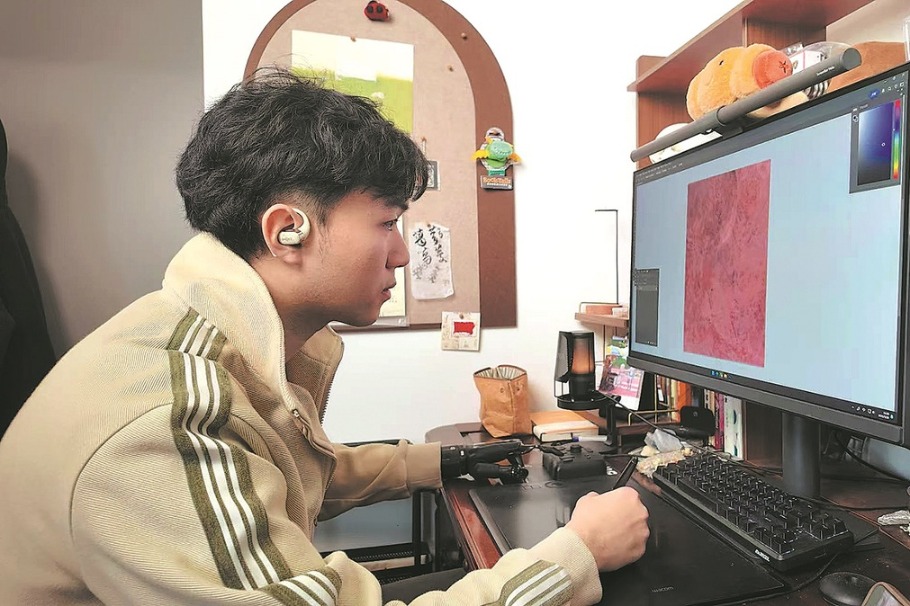Gene testing kits bolster security of domestic pork

People in China can look forward to savoring superior quality pork thanks to domestically developed gene testing kits that will allow farmers to raise pigs that can breed more prolifically and have better resistance to diseases.
Microarray technology, commonly called "pig chips", refers to a microchip-based testing platform that allows automated analysis of many DNA samples at once.
China's ability to make its own microarray testing kits not only offers a cost-effective way to analyze a large quantity of genetic materials, it also substantially reduces the nation's dependency on imported pig strains, industry experts said.
The technology can help fast-track the otherwise lengthy process of selecting piglets with certain genetic makeups, which is a boon for breeders seeking to raise new species with desirable traits such as better immunity and reproductive performance, they said.
China is the globe's biggest market for pork, consuming some 700 million pigs annually, and about 90 percent of them are descendants of imported strains from countries such as the United States, the United Kingdom, Denmark and France.
From 2018 to 2019, an outbreak of African swine fever led to the loss of nearly half of China's total pig stocks, and so developing better disease resistance is of critical importance.
In February last year, a team of scientists led by Wu Zhenfang, a professor at South China Agricultural University, announced that they had developed their own microarray testing kit.
The breakthrough was reported by China Central Television, which said the domestically developed kit could reduce testing costs by about 90 percent. "With the test kit, it is possible to know early on if a piglet has the potential to grow into a quality pig fit to be used for breeding," CCTV reported.
A few months later, a group of researchers at the Chinese Academy of Agricultural Sciences said they had developed another microarray kit under the brand name Tianpeng Chips.
The kit is designed to detect the desirable genetic makeup found among several domestic pig species, according to a statement posted on the academy's website. The progress is significant in conserving homegrown pig species and their germ plasm, or genetic resources, which are crucial for breeding research, it said.
Imported strains are more commercially rewarding and, as a result, are used by large pig farming operations. Domestic species, which usually consume more feed and have a longer reproductive cycle, are sidelined during the process. Some have even been pushed to the brink of extinction by exotic strains.
The culling of pigs in China triggered by the outbreaks of African swine fever in 2018 and 2019 further endangered domestic species.
A six-episode documentary broadcast by CCTV earlier this year shed light on the declining population of local pig species. The population of the Rongchang pig species in Chongqing plummeted to its lowest level in 2019. There were just 8,000 fertile sows left nationwide, according to the documentary.
In an interview with Beijing News, Gong Huazhong, an executive officer overseeing the breeding program at New Hope Group, an agricultural conglomerate, said that importing well-performing exotic pig strains is an expensive undertaking.
The average cost of introducing a single "breeding pig" — hogs raised for reproduction and meat — is 10,000 yuan ($1,400), and China spent about 240 million yuan on that front in 2021, Gong said.
As favorable traits decline after generations of inbreeding, which is known as "genetic depression", companies are required to purchase new "seed hogs" for better offsprings. China reduced its imports in 2014, but the number rebounded after African swine fever hit the Chinese mainland five years ago.
According to an industry survey published by the report database Chinabaogao.com, China imported 24,462 breeding pigs in 2021, a year-on-year increase of 60 percent.
The push for a bigger domestic hog supply is part of broader efforts by the world's largest pork consumer and producer to wean its reliance on imported farm animal strains and reinforce national food security.
At the Central Rural Work Conference in late December, central authorities urged agricultural scientists and researchers to focus on core germ plasm resources.
The conference highlighted the significance of innovations in breeding and seed technologies on par with the traditionally important task of farmland preservation in an effort to reduce the country's dependency on imports.
Officials attending the conference called for real progress in the campaign to invigorate the agrarian industry, in order to keep major varieties and species "firmly in our own hands".
Today's Top News
- Tajikistan looks to China for deeper ties
- High-tech manufacturing lifts industrial profits
- Avenue blooms with flowers to mark victory
- Mainland slams DPP for distorting WWII history
- Northeast Asia trade in focus at Jilin expo
- Organic agriculture forum unites global experts in Datong






























